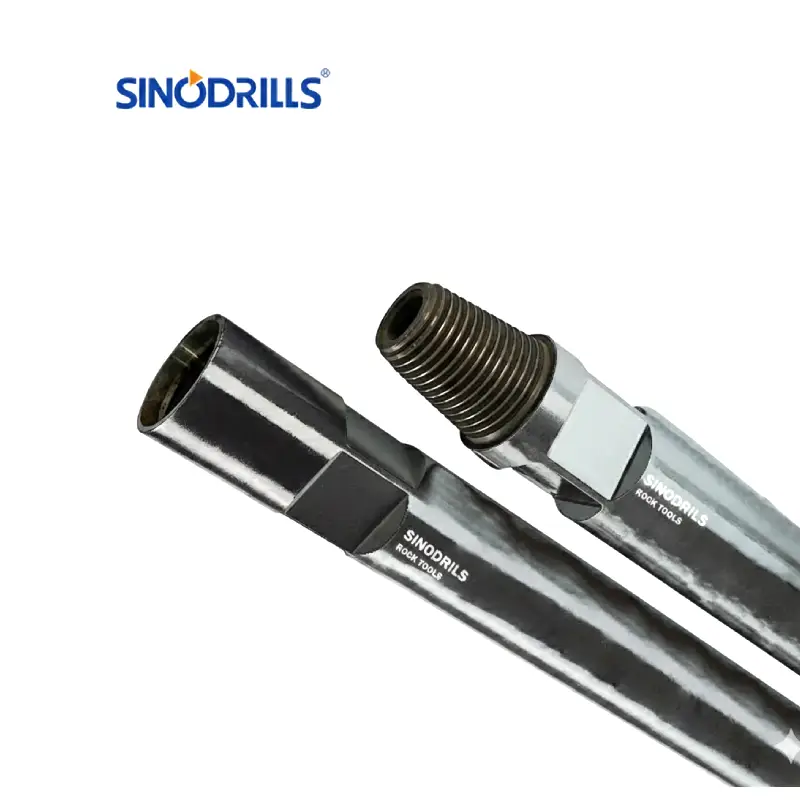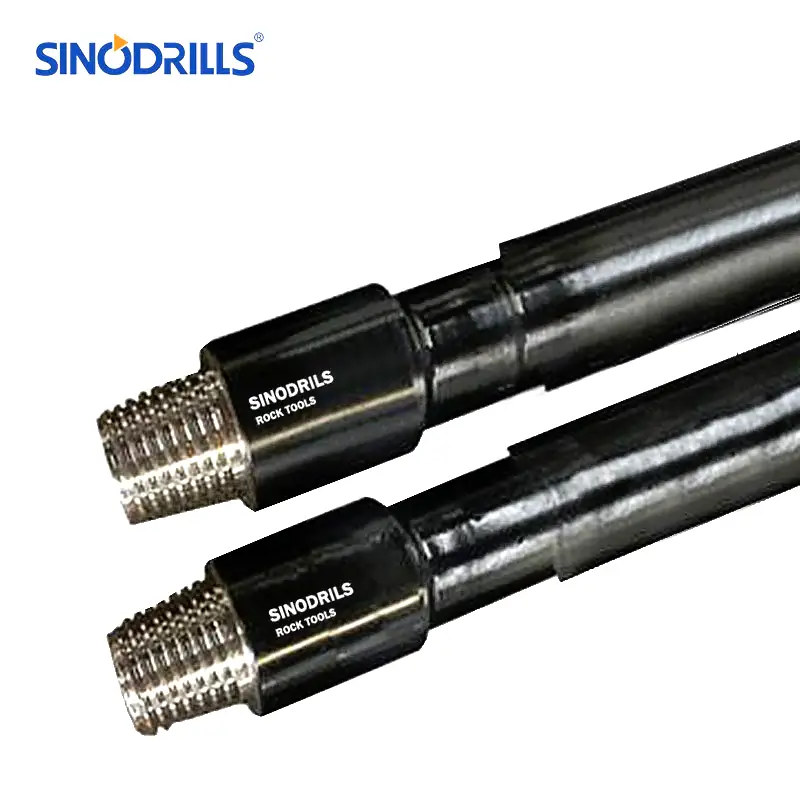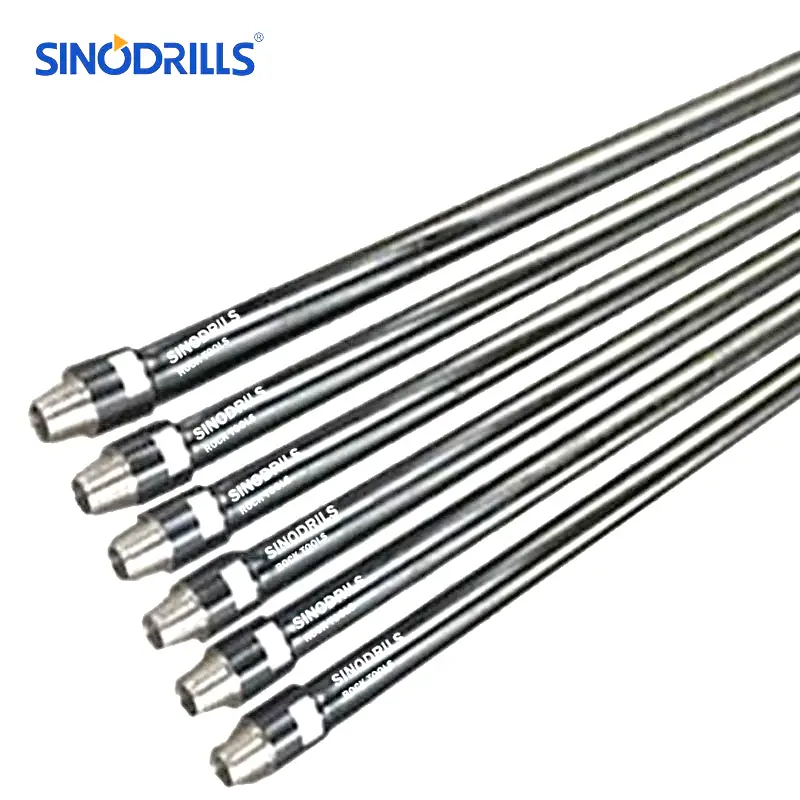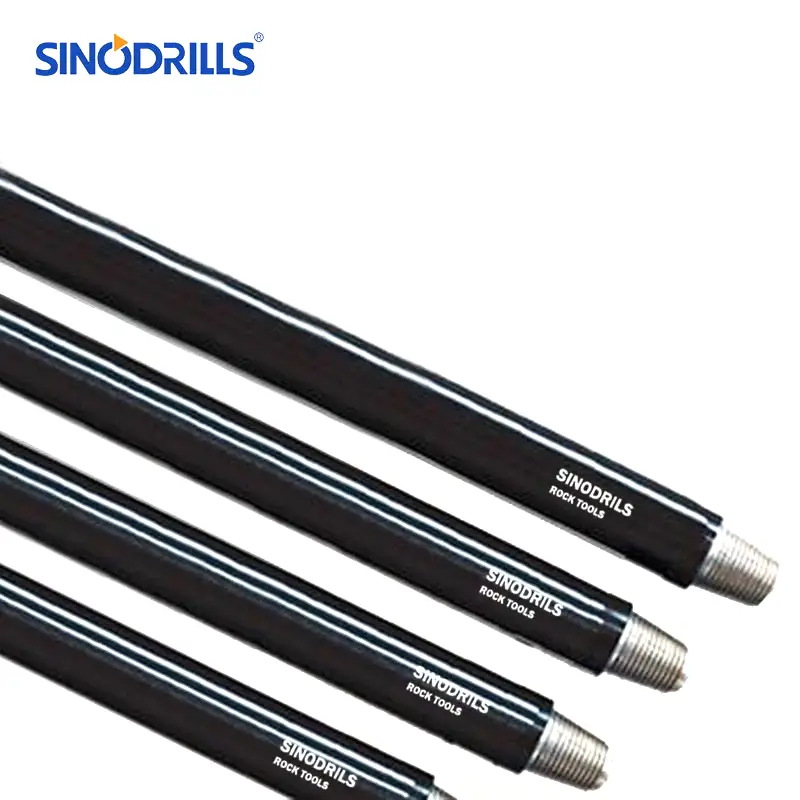The selection of the appropriate drill pipe type is a foundational decision that significantly impacts the success, safety, and economics of any drilling project. With diverse geological conditions and ever-evolving drilling techniques, choosing the right pipe is more critical than ever.
This guide explores the various types of drill pipes available, detailing their unique characteristics, advantages, and ideal applications. Understanding these distinctions will empower you to make informed choices, ensuring optimal performance and cost-effectiveness for every drilling challenge.
What are Drill Pipes?
Drill pipes are robust, seamless steel tubes that form the primary component of a drill string in rotary drilling operations. They serve as the crucial link between the surface drilling rig and the drill bit at the bottom of the borehole. Their main functions include transmitting rotational torque to the bit, providing a conduit for the circulation of drilling fluid, and withstanding immense axial, torsional, and internal/external pressure stresses.
Manufactured in standard lengths and connected by specialized threaded tool joints, drill pipes are designed to be extended as the well deepens, enabling the continuous drilling process in various applications such as oil and gas, geothermal, and water well drilling.
Drill Pipe Types
Recommended Drill Pipes
Drill Pipe Types, the fundamental components of any drill string, are engineered to meet the diverse demands of drilling operations across varied geological conditions. Each type serves a specific function, contributing to the efficiency, safety, and success of drilling projects.
Understanding these classifications is crucial for selecting the appropriate pipe for a given well design, depth, and drilling environment. This knowledge ensures optimal performance, efficient fluid circulation, and effective power transmission to the drill bit.
Regular Drill Pipe
Regular drill pipe, often simply referred to as drill pipe, forms the bulk of the drill string. These seamless steel tubes are designed to transmit rotational torque from the surface rig to the drill bit, circulate drilling fluid, and withstand significant tensile and torsional stresses. They are typically available in standard lengths, connected by specialized threaded tool joints.
Crafted from tempered steel, regular drill pipes are optimized for balance between strength and flexibility. Their specifications, including outer diameter, wall thickness, and steel grade, are chosen based on the wellbore size, anticipated downhole pressures, and the required depth of drilling, making them versatile for various applications.
Heavy Weight Drill Pipe (HWDP)
Heavy Weight Drill Pipe (HWDP), also sometimes called weighted drill pipe, serves as a crucial transitional component in the drill string. Positioned between the flexible regular drill pipe and the rigid drill collars, HWDP is designed with significantly thicker walls and often features external upsets or wear bands to increase its weight and stiffness without sacrificing flexibility.
HWDP’s primary role is to provide additional weight on the bit (WOB), particularly in directional and horizontal wells, while also mitigating fatigue failures that can occur at the connection points between conventional drill pipe and drill collars. Its design helps to dampen vibrations and improve the overall stability of the bottom-hole assembly.
Kelly Pipe
The Kelly pipe, or Kelly, is a specialized component used at the top of the drill string in rotary table drilling rigs. It is a heavy, square or hexagonal shaped steel pipe that fits through a corresponding opening in the rotary table, allowing the table’s rotation to be transferred to the entire drill string.
Its unique shape ensures that rotational torque is efficiently transmitted while simultaneously allowing for vertical movement as the drill bit advances. As top drive systems become more prevalent, the use of Kelly pipes is becoming less common, but they remain a key element in many traditional drilling setups.
Drill Pipe Types Overview
| Drill Pipe Type | Primary Function | Key Characteristics | Typical Location in Drill String |
| Regular Drill Pipe | Transmit torque, circulate fluid, extend length | Seamless steel tube, various ODs, wall thicknesses, steel grades, threaded tool joints | Main body of the drill string |
| Heavy Weight Drill Pipe (HWDP) | Provide transitional weight, reduce fatigue, dampen vibrations | Thicker walls, often external upsets, heavier than regular drill pipe, more flexible than collars | Between regular drill pipe and drill collars |
| Kelly Pipe | Transmit torque from rotary table, allow vertical movement | Square or hexagonal cross-section, heavy-walled, fits into rotary table | Top of the drill string (in rotary table rigs) |
How to Choose the Right Drill Pipes?
Choosing the right drill pipe is a critical decision that directly impacts drilling efficiency, safety, and overall project costs. It requires a comprehensive understanding of the drilling environment, well design, and the specific demands that will be placed on the drill string. Incorrect selection can lead to premature pipe failure, costly non-productive time (NPT), and compromise the integrity of the wellbore.
Careful consideration of factors such as the anticipated downhole conditions, the type of drilling operation, and the desired well trajectory will guide the selection process. Matching the drill pipe’s specifications to these variables ensures optimal performance, extends equipment life, and enhances the economic viability of the drilling program.
Well Design and Depth:
- Deeper Wells: Require drill pipes with higher tensile strength and collapse resistance to withstand greater axial loads and external pressures. Material grades like G-105 or S-135 are often preferred.
- Directional/Horizontal Wells: Benefit from more flexible drill pipe sections and often incorporate Heavy Weight Drill Pipe (HWDP) to provide continuous weight on bit and minimize fatigue in the curve sections.
- Straight Holes: Standard drill pipe is usually sufficient, but still needs to match the depth requirements.
Formation Characteristics:
- Hard/Abrasive Formations: Demand drill pipes with excellent wear resistance, often featuring hardbanding on tool joints to prolong lifespan. Consider pipes with robust upset designs to handle increased torque and impact.
- Soft/Unconsolidated Formations: May allow for lighter-weight drill pipes, as the stresses on the pipe are generally lower. However, fluid dynamics for cuttings transport become more critical.
Drilling Method and Equipment:
- Rotary Table vs. Top Drive: The choice dictates the use of a Kelly pipe for rotary table rigs. Top drive systems utilize the standard drill pipe directly, requiring strong connections.
- Mud Type and Hydraulics: The internal diameter (ID) of the drill pipe affects annular velocity and pressure drop. Ensure the ID is sufficient for efficient circulation of the chosen drilling fluid, especially in high-flow or high-viscosity applications.
- Rig Capacity: The total weight of the drill string must be within the rig’s hoisting capacity. This influences the choice of pipe OD, wall thickness, and the amount of HWDP or drill collars.
API Standards and Connections:
- API Specification 5DP: Adherence to API standards ensures interchangeability and quality. Always verify that the pipe meets the required API specifications for dimensions, material grade, and testing.
- Tool Joint Connections: Select connections that are compatible with other drill string components and capable of handling the anticipated torque and tensile loads. Common types include API Reg, FH, and NC connections, chosen based on OD and strength requirements.
Cost and Lifespan:
- While initial cost is a factor, prioritize the cost per foot drilled over the pipe’s purchase price. A higher-quality, more durable pipe might have a higher upfront cost but can significantly reduce NPT and replacement frequency, leading to lower overall operational expenses in the long run.
- Consider the expected lifespan of the pipe under the anticipated drilling conditions and balance it against the investment.
Conclusion
In conclusion, selecting the optimal drill pipe type is paramount for navigating the complexities of modern drilling challenges. Whether it’s standard drill pipe, heavy-weight drill pipe, or specialized grades, each type offers distinct advantages crucial for efficiency, safety, and project success in diverse geological settings.
By carefully considering factors like well depth, formation characteristics, drilling trajectory, and operational stresses, drilling professionals can ensure that their drill string is perfectly matched to the task. This strategic choice directly contributes to maximizing drilling performance and minimizing costly downtime.
For reliable, high-quality drill pipes tailored to every drilling challenge, consider sourcing wholesale drill pipes directly from our Sinodrill manufacturer in Qingdao, Shandong, China.







